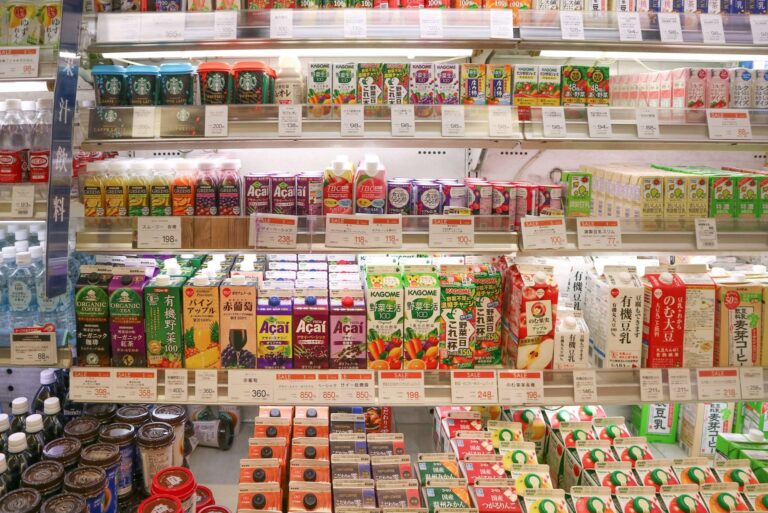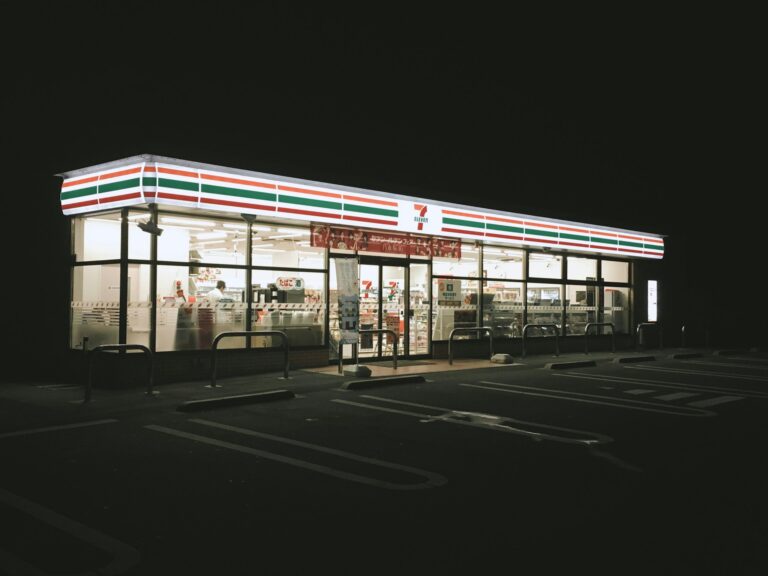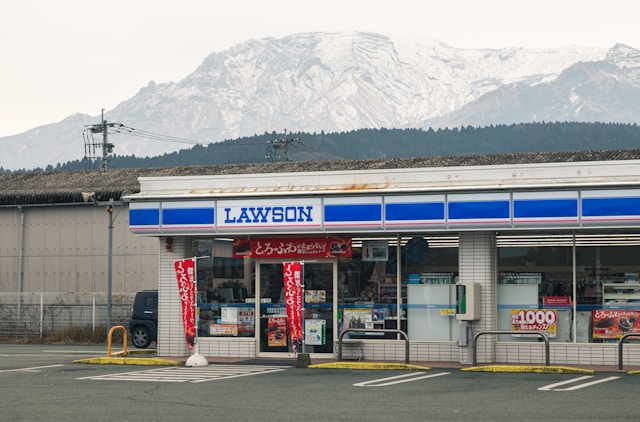Konbini: Differentiation strategies of the Big Three

There are currently over 56,000 convenience stores in Japan. I’m sure for many that may not come as a surprise if you live in a major city where they are in every corner. I’m sure anywhere you walk you will run into one of the big three. But what really makes these three different other than the jingles you hear when you walk through the door? Today we will be diving into all thing’s convenience stores. We will talk a bit about the industry and the big three, what strategies they use to differentiate, and some future trends in the industry.
Convenience Stores
This may be hard to imagine, but go back 50 years ago, and convenience stores weren’t even a thing. Convenience stores, or Konbini (コンビニ) in Japanese, are actually a relatively new phenomenon. In those 50 years, they have blown up and taken over the entire Japanese landscape, and It’s hard to imagine a Japan without seeing one in every corner you go.
The convenience store has become an essential part of Japanese life. When thinking about it, what often comes to mind are its endless aisles of foods and refrigerators with all types of beverages. But unless you live there, you may not interact with the range of services it provides. These include its fax machines, an essential part of Japanese life, printers, ticket printing machines, ATMs, and Free Wi-Fi, and you can pay your bills there too. In some cases, it also offers its banking services and credit cards.
This leads us to the biggest convenience stores in Japan, also known as the big three: Seven-Eleven, Lawson, and FamilyMart. The three combined account for 90% of the convenience store market. Seven-Eleven is the largest at 40%. Followed by Family Mart at 27% and Lawson at 22%.
It seems like you can find any of these three anywhere you walk in Japan. But, similarly to grocery stores, it can be hard to differentiate yourself from the competition. This is especially true when you can usually find any of these three in different corners of a block or across the street from each other. That means each of these stores has had to develop new strategies to attract customers to their stores. Let’s dive into some of these strategies.
Differentiation Strategies of the Big Three
Seven-Eleven: Technology and Quality

Being the largest of the three, it has developed one of the most sophisticated and efficient supply management systems in the game. Its operational efficiencies ensure that food on the shelves is always fresh and has managed to minimize waste and increase product availability. This has been paired with the latest technology to ensure they always have the edge.
This technology has also been incorporated into their stores and customers’ experience. It has incorporated sophisticated cash payment systems that also allow for cashless payment systems including its 7Pay system increasing the convenience factor. It still requires a cashier to scan the products, but they have been experimenting with using cashier-less systems as well. It has also integrated AI technology to predict customer demand and ensure that the products in demand at that store are always in stock.
Lastly, it has differentiated itself by delivering quality. The Seven Premium line is a collaboration with private labels to deliver high-quality food and beverages. This ranges from ready-to-eat meals, like bentos, and sushi, to snacks, and desserts. The focus is freshness and quality like what you would get in traditional restaurants but focused on busy businesspeople and students.
FamilyMart: Customer-Focused

FamilyMart brands itself as a modern and approachable brand that focuses highly on customer engagement. One of the ways it does that is through its T-Point Card loyalty program. Every time someone purchases, they are rewarded with points, that they can then use to redeem rewards at any FamilyMart store. This encourages repeat visits and customer retention. This is also coupled with limited-time campaigns where they can earn bonus points if they purchase.
On a similar note, this brand is also known for frequently collaborating with other brands like popular anime, and entertainment brands. This can include unique products and merchandise that are themed for an anime such as Pokemon or Kimetsu no Yaiba (Demon Slayer). This is particularly popular among younger audiences and collectors and creates a buzz, which helps with word-of-mouth marketing.
Lastly, we cannot talk about FamilyMart without mentioning its signature product the Famichiki. For those that don’t know it’s just fried chicken. But this simple fried chicken has become so popular it has become synonymous with FamilyMart. It has developed a cult following with much of its traffic coming specifically to eat it. Outside of that and similar to Lawson as we will see, they offer local specialties in their stores.
Lawson: Community and Health

Lawson has also developed a very customer-centric approach to its brand. However, it is more focused on niche markets and community needs. One of these niches is health. It has developed a line of stores called Natural Lawson. This line of stores is more focused on delivering organic and low-calorie food options for the health-conscious in bigger cities like Tokyo. It offers items like fresh salads, organic snacks, and harder-to-find items like kombucha and gluten-free breads.
Another is its focus on local or regional partnerships. They often work with local or regional farms where they source their produce or regional specialties. They then incorporate that produce into a unique product sold only in that area. For example, they may make a sweet in Hokkaido using the local milk, or in Kagoshima, they might offer a bento using their famous Kurobuta.
The niches also spread to their approaches to convenience. One of these conveniences is teaming up with Uber Eats to deliver food, beverage, and daily necessities from its stores. It also has its Lawson 100 stores which are more of a hybrid grocery store. These stores offer fresh produce at very low prices.
Future Trends
- Health Focused: As is the case with many places around the world, there has been an increased focus on health. This means there will be an expansion on goods that are organic, low-calorie, and allergen-free like gluten-free.
- Sustainability: We already have to pay to get plastic bags, but we will see stores actively look for means to reduce waste, particularly plastic waste, and incorporate eco-friendly packaging.
- Regional Growth: We should also see a shift to expanding in rural areas. These places don’t have the same density of stores as cities. It’s a potentially untapped market with opportunities to collaborate locally.
- AI and Tech: We should also see an increase of utilizing AI to better predict and meet demand for stores. We may also see automated and unmanned stores increase.
I hope you enjoyed this content. If you’d like to see more of this follow me on social media or follow my newsletter to get the latest updates of when I release new content.